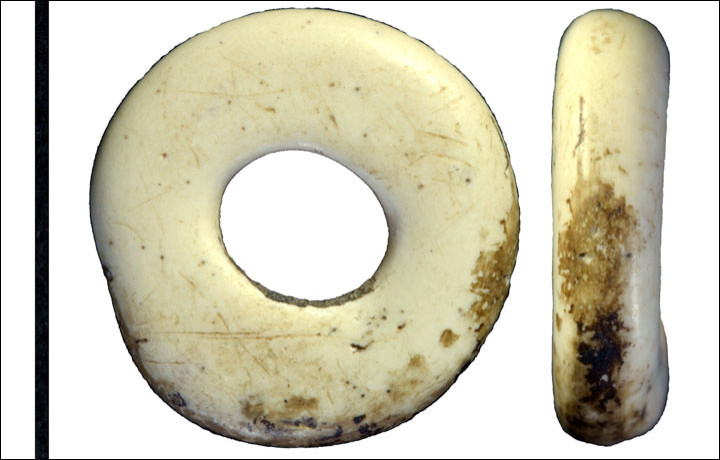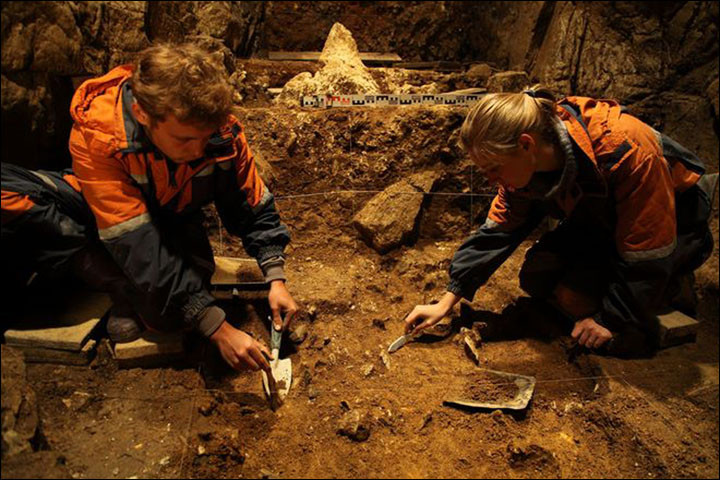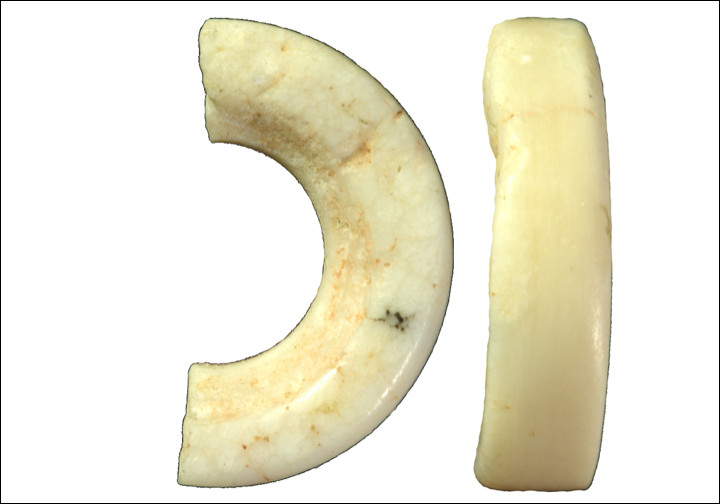50,000-year-old jewellery made from ostrich eggshells discovered in Siberian cave
Ostriches may have lived in Siberia in Palaeolithic times.

A collection of jewellery made from the eggs of ostriches has been unearthed by archaeologists in the Denisova Cave in the Altai region of Siberia in Russia.
The jewellery, which dates to the Palaeolithic period, was made by drilling a hole through a small disc of eggshell. The archaeologists excavating the site say they may have been worn on a string as a necklace or bracelet, or sewn into clothing.
The beads are a little less than 1cm across, all fairly regular in size and with a central hole just a millimetre or so wide, the Siberian Times reports.
"This is no ordinary find," says Maksim Kozlikin, a researcher at the Institute of Archaeology and Ethnography in Novosibirsk, Russia. "Our team got quite excited when we found the beads. This is an amazing piece of work. The ostrich egg shell is quite robust material, but the holes in the beads must have been made with a fine stone drill."
The findings suggest that early humans in the Palaeolithic period had craftsmanship skills more closely associated with the Neolithic period, which began about 12,000 years ago.
"For that time, we consider this to be an exquisite jewellery work of a very talented artist," Kozlikin says.

However, finely worked beads such as these have also been found to be almost as old in South Africa's Border Cave in the foothills of the Lebombo Mountains in KwaZulu-Natal. Those beads dated to about 44,000 years old and had some striking visual similarities to those found in the Denisova Cave.

Exactly how the beads found their way into the cave is not yet known. One possibility is that ostriches were native to Siberia during the Palaeolithic. Another is that ostrich eggs were transported from the Trans-Baikal region or from Mongolia, Kozlikin says, with the beads being manufactured in Siberia. Alternatively, the beads could have been made elsewhere and transported to Siberia later.
"Whichever way we look at it, it shows that the people populating the Denisova Cave at the time were advanced in technologies and had very well-established contacts with the outside world," says Kozlikin.

The Denisova Cave remains at an average of 0 degrees C (32 degrees Farenheit) annually, aiding the preservation of the artefacts and fossils found at the site. The cave is found in the Altai region of Siberia near Russia's southern border with Kazakhstan.

The cave was occupied by Homo sapiens along with now extinct early humans – Neanderthals and Denisovans – for at least 288,000 years. Excavations at the cave have been underway for 30 years and are still continuing.
© Copyright IBTimes 2025. All rights reserved.






















